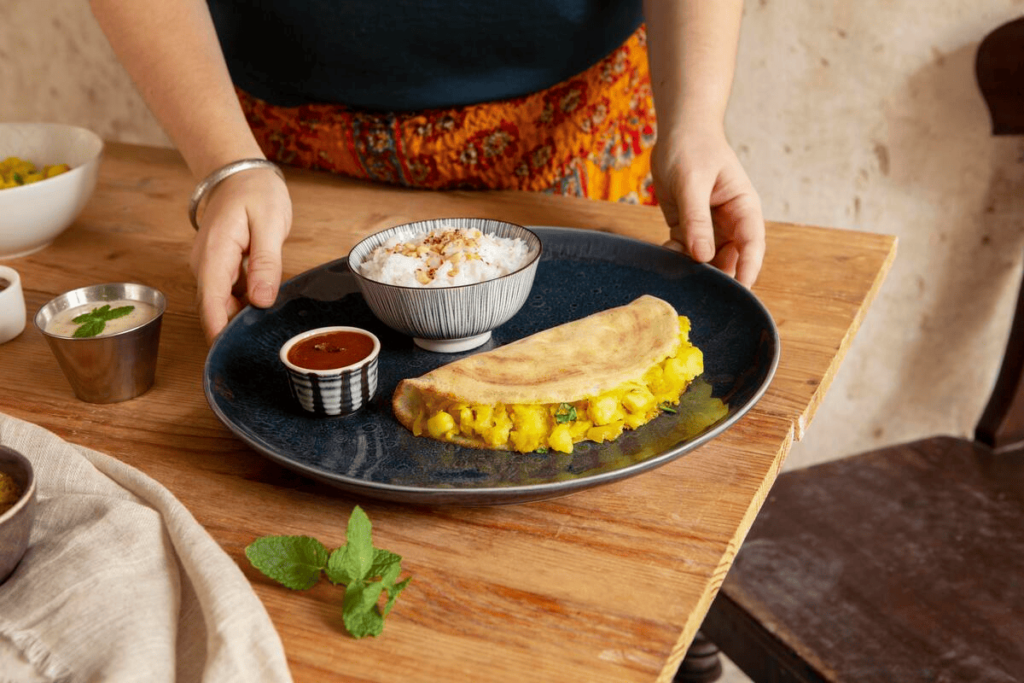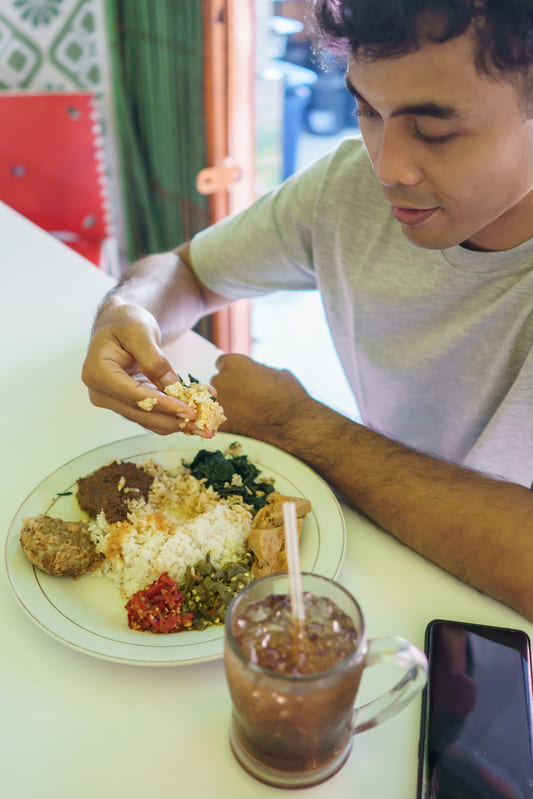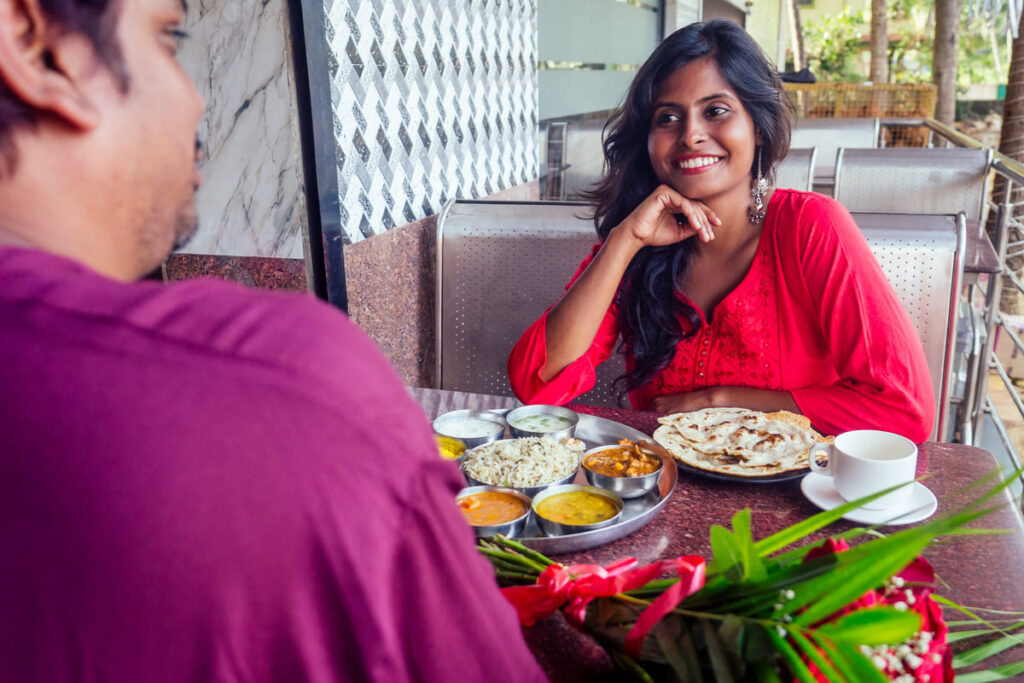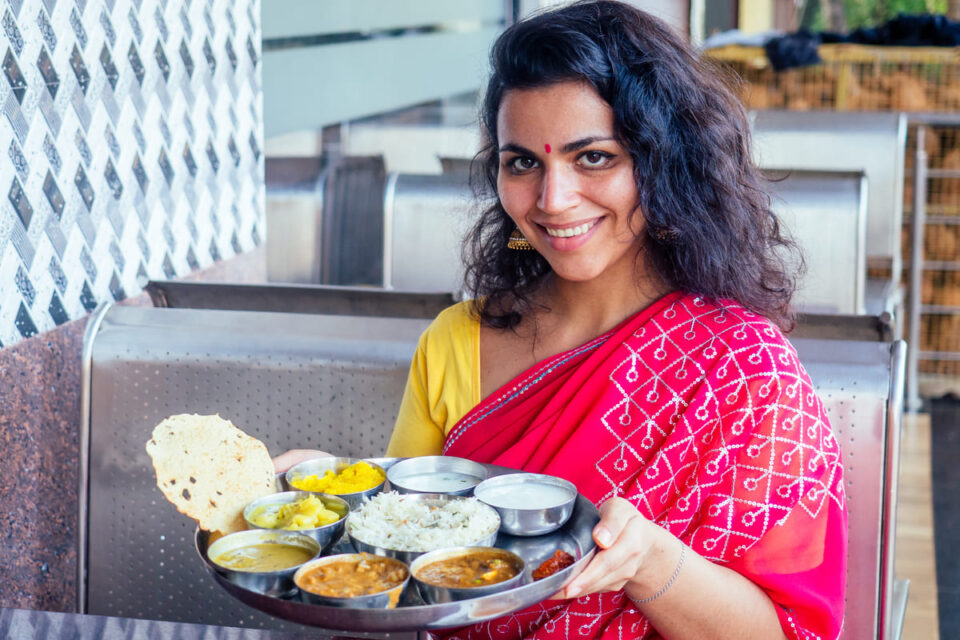Every day in India, we make over 20 decisions about food – yet we spend an average of just 15 seconds looking at what we’re about to eat. When it takes you to read this paragraph, your brain will have already made seven micro-decisions about your next meal. According to recent Harvard School of Public Health research, increasing your food observation time by 45 seconds can reduce your caloric intake by 23% and potentially add years to your life. This simple act of pausing transforms thousands of lives – from tech executives to homemakers, diabetes patients to heart survivors.
For twenty-five years, I have been telling my patients something that often draws sceptical looks: “Before you begin your meal, spend one minute looking at your food.” It’s like how a seasoned cricket player reads the pitch before taking a stance – that brief moment of assessment can determine the entire game.

Let me tell you about Raju (name changed), a software professional from Manyata Tech Park, who came to me with uncontrolled diabetes. Like many in our tech hub, his meals were often hurried between Zoom calls, consisting of whatever the office cafeteria served. One day, he shared how this simple one-minute rule helped him spot patterns he had never noticed. “Doctor Saab,” he said, “I realized my blood sugar spikes were not just about what I ate but about seeing what was on my plate.”
The wisdom of mindful eating is familiar to our culture. Our mothers who insisted on serving food on steel thalis were not just being traditional – they were onto something. The compartmentalized thali is like nature’s food app, displaying the perfect nutrients our body needs. When my patients learn to pause and observe their thali, magic happens.
Take Mrs. Lakshmi, a homemaker from Malleshwaram who struggled with severe gastritis. “The moment I started looking at my food,” she told me, “I could almost hear my stomach warning me about that extra splash of sambar powder.” Like a skilled artist who can tell which colours blend well, she intuitively understood which foods would agree with her system.

The science behind this practice is fascinating. Research published in the Journal of Nutrition Education and Behaviour shows that visual assessment of food portions can improve portion control by up to 30%. A study from the All India Institute of Medical Sciences found that mindful eating practices, including pre-meal observation, helped reduce HbA1c levels in diabetic patients by an average of 0.8%.
But it’s not just about portion control or avoiding trigger foods. In our busy Bangalore lives, where food delivery apps tempt us with instant gratification, this one-minute pause acts like a natural firewall. It’s similar to how our city’s famous lakes, when healthy, act as natural flood control systems – this simple practice helps regulate our eating patterns.
I remember a young startup founder who came to me with chronic hypertension. Her blood pressure would spike dramatically after lunch meetings. When I suggested the one-minute rule, she was hesitant – “Doctor, time is money in my world.” But soon, she noticed something interesting. Those business lunches where she took a moment to observe her food helped her make better choices and be more mindful during negotiations. “It’s like debugging code,” she laughed, “You need to pause and observe before you can fix the problem.”

The beauty of this practice lies in its simplicity. For my patients with obesity, it’s become a powerful tool. Like how our city’s beloved Cubbon Park provides a green refuge in the concrete jungle, this one-minute pause offers a moment of reflection in our rush to eat. One patient compared it to watching the traffic signal at Silk Board junction – “If we can wait patiently there, we can surely spare a minute for our health!”
The practice works exceptionally well for our unique Bangalore lifestyle. In a city where traditional South Indian breakfast often competes with continental options, this pause helps us make conscious choices. I’ve seen remarkable transformations in patients with various conditions:
For asthma patients, this practice has been revelatory. They’ve learned to spot foods that might trigger wheezing, especially during Bangalore’s allergy-prone seasons. One patient told me, “Doctor, now I can predict an asthma attack just by looking at how oily my masala dosa is!”
My diabetic patients have become experts at visualizing carbohydrate portions. Like skilled meteorologists reading weather patterns, they can now gauge how different foods will affect their sugar levels. A retired professor from Jayanagar shared, “It’s like solving a mathematical equation – the variables are all there on the plate.”
For those with heart conditions, this practice has become a vital tool. Just as our city’s Metro has transformed how we navigate Bangalore, this simple rule has revolutionized their diet. They’ve learned to spot excess salt, hidden fats, and portions that might strain their hearts.
Recent research from the National Institute of Nutrition in Hyderabad supports this approach. Their studies show that visual assessment of meals can lead to better food choices in 78% of cases. When combined with traditional Indian wisdom about food compatibility (like our ancestral knowledge of sattvic, rajasic, and tamasic foods), the results are even more impressive.
But it’s not just about avoiding harmful foods. This practice helps us appreciate the incredible diversity of our local cuisine. From the wholesome ragi mudde to the nutritious bisibelebath, our traditional foods tell their health stories – if only we pause to listen.
Last year, a software engineer slumped into my clinic chair, clutching his phone like a lifeline. His words tumbled in frustrated bursts: “Doctor, I’ve downloaded every health app. Tried every diet. Nothing works.”
I told him about the one-minute rule.
He looked up from his screen for the first time. “You want me to debug my food?”
Three weeks later, he bounded into my clinic with glucose readings. His grin said everything. “Doc, who knew fixing my diet would be easier than fixing code?”
This young techie had stumbled upon what Ayurveda has known for millennia. The Charaka Samhita calls it “ahara vekshana” – the sacred art of observing food. Modern science confirms what our ancestors knew: this observation triggers the cephalic phase of digestion, where our body prepares digestive enzymes before the first bite. It’s like a grand concert where your eyes are the conductor, signalling the orchestra of your digestive system to warm up.
The research startled me every time I shared it: a single minute of observation can boost your taste perception by 30%. Your eyes act as gatekeepers, rolling out a red carpet for your meal. Our Ayurvedic physicians named this phenomenon “Netra prasada”—the blessing of sight that transforms eating from mere consumption to complete nourishment.
To my fellow Bangaloreans rushing between meetings and deadlines, I offer this thought: the most radical act might be this pause in our world of endless screen time. Take that minute to grab breakfast at the Airlines Hotel or savour biryani at your favourite Nandini palace or home. As my grandmother would say, with a twinkle in her eye, “Your stomach has no eyes—that’s why God put them on your face!”
In that single minute lies ancient wisdom, modern science, and perhaps the key to your health. Like that rare green signal at Silk Board junction, it might be the miracle you have been waiting for.

